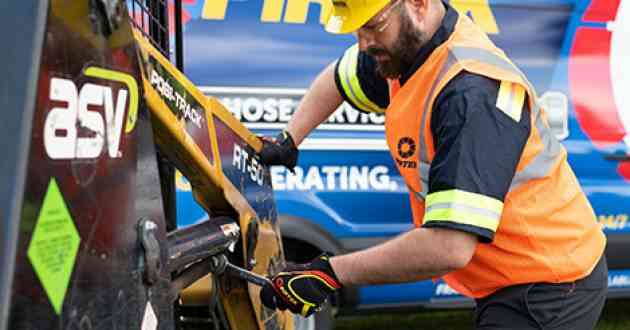Best Hydraulic Hose Safety
- - Category: Industrial
- - 26 Oct, 2023
- - Views: 12
- Save
When working with hydraulic hoses, it is essential to wear appropriate personal protective equipment (PPE). This include
Hydraulic hoses play a crucial role in the operation of hydraulic systems, but it's important to prioritize safety when working with them. Failure to follow proper safety guidelines can result in accidents, injuries, and equipment damage. In this article, we will discuss key safety measures to ensure the safe use and handling of hydraulic hoses.
- Personal Protective Equipment (PPE)
When working with hydraulic hoses, it is essential to wear appropriate personal protective equipment (PPE). This includes safety glasses or goggles to protect your eyes from potential hose leaks or bursts, gloves to protect your hands from abrasion or chemicals, and protective clothing to shield your body from hydraulic fluid splashes or spills.
Safety Tip: Always inspect your PPE before use to ensure it is in good condition and provides adequate protection.
- Proper Training and Education
Before handling hydraulic hoses or working with hydraulic systems, it is crucial to receive proper training and education. Familiarize yourself with the specific hydraulic system you are working with, its components, and the potential hazards associated with hydraulic hoses. Training should cover proper hose installation, maintenance, and troubleshooting techniques.
Safety Tip: Regularly update your knowledge and skills by attending training programs or workshops related to hydraulic system safety.
- Pressure Relief and Lockout/Tagout Procedures
Hydraulic systems operate under high pressure, making it essential to understand pressure relief and lockout/tagout procedures. Familiarize yourself with the location and operation of pressure relief valvesand know how to safely release pressure before performing any maintenance or repair work on the hydraulic system.
Safety Tip: Always follow lockout/tagout procedures to ensure the hydraulic system is isolated from its power source and cannot be accidentally activated while you are working on it.
- Proper Hose Inspection
Regular inspection of hydraulic hoses is crucial for identifying potential issues and preventing hose failures. Inspect hoses for signs of wear, damage, leaks, or degradation. Pay attention to areas prone to abrasion, such as bends, connections, or areas in contact with other equipment. Replace any hoses that show signs of damage or wear.
Safety Tip: Perform visual inspections of hydraulic hoses before each use and during routine maintenance checks. Inspect for leaks, cracks, bulges, or any other signs of damage.
- Correct Hose Routing and Installation
Proper hose routing and installation are essential for safe and efficient hydraulic system operation. Follow manufacturer guidelines and industry standards for hose routing, avoiding sharp edges, tight bends, or areas with excessive heat or vibration. Ensure hoses are securely fastened using appropriate clamps or brackets and use compatible fittings and adapters.
Safety Tip: Avoid routing hydraulic hoses near moving parts or areas where they can be pinched, crushed, or damaged.
By following these safety measures, you can minimize the risks associated with hydraulic hoses and ensure a safe working environment. Remember to prioritize safety at all times, stay vigilant during hose inspections, and seek professional assistance if you encounter any issues or concerns with hydraulic hoses.
FAQs
What should I do if a hydraulic hose bursts or leaks?
If a hydraulic hose bursts or leaks, immediately shut down the hydraulic system and relieve the pressure. Clean up any spilled hydraulic fluid and replace the damaged hose before resuming operation.
Are there any specific safety guidelines for hydraulic hose storage?
Yes, when storing hydraulic hoses, keep them in a clean, dry, and well-ventilated area away from direct sunlight, extreme temperatures, or corrosive substances. Avoid placing heavy objects on top of the hoses to prevent damage.
Can hydraulic hoses be reused after they have been removed from a system?
It is generally recommended to replace hydraulic hoses after they have been removed from a system. Reusing hoses can pose safety risks, as they may have experienced wear or degradation during their previous use.
What should I do if hydraulic fluid comes into contact with my skin or eyes?
If hydraulic fluid comes into contact with your skin, wash the affected area thoroughly with soap and water. If it gets into your eyes, immediately flush your eyes with clean water for at least 15 minutes and seek medical attention.
Are there any specific safety precautions when working with high-pressure hydraulic systems?
Yes, when working with high-pressure hydraulic systems, always use appropriate pressure-rated hoses, fittings, and couplings. Follow proper installation and torque guidelines, and regularly inspect the system for leaks, pressure abnormalities, or other signs of potential issues.


